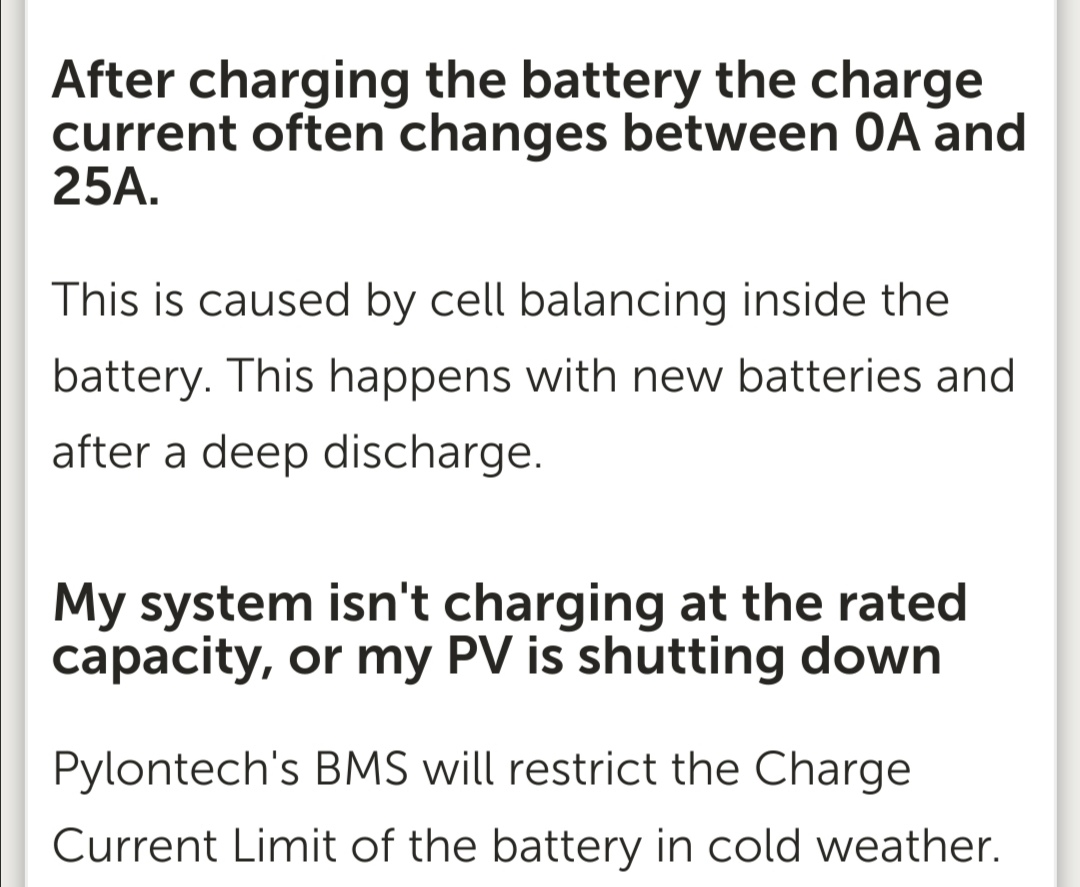Hi (and a happy new year, of course),
running 2 of the BYD Premium LVL 15.4 in a 3P config with MultiPlus II 5000 shows weird characteristics while approaching the 100% SOC - after updating to the latest BYD battery firmware levels. While charging (with relatively low current 10-20A) below 100% SOC all looks fine (max Voltage (CVL) 58.4V max Charge Limit (CCL) 468A) - once running at 99% for a while - so shortly before reaching the 100% - the max charge voltage (CVL) abruptly dropped to 56.9V (CCL to 0A) and the Inverters start to discharge with >160A for about 10-20 sec before start charging (low charge current) again. This hasn't been observed with previous BYD firmware levels and the same levels on the MPII and Venus. This happens now during all charging cycles reaching 100%, no exception. Is there any mitigation/workaround going back to a smooth approaching the 100% SOC ? Looking more at the nasty details i also saw that charging (~5A) continous at 100% SOC level while the BYD BMU reports a max charge (CCL) of 0A, the voltage is still below CVL - is that Ok ? Is the voltage level the important one and the mac current (CCL) could be ignored ? just to be sure the batteries staying healthy ;-)
best regards,
Martin

